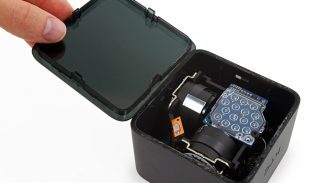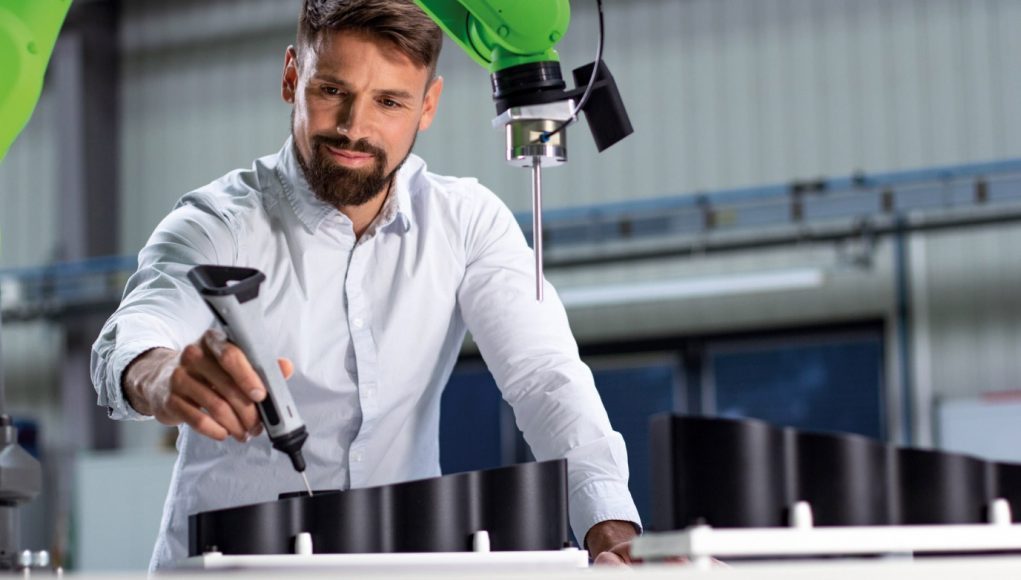In an interesting bit of news which shows Valve’s SteamVR Tracking technology used in a non-VR application, robotics company Wandelbots has raised a $30 million Series B investment around their TracePen tool, a motion-tracked stylus which makes it easy to program the complex movements of industrial robots.
When Valve first introduced its SteamVR Tracking technology (formerly called Lighthouse) in 2015, the company said it envisioned the system being like ‘wi-fi for motion tracking’, in the sense that any device could make use of a shared tracking volume—including non-VR devices.
Germany-based Wandelbots is leveraging the tracking technology for its TracePen product which is designed to make programming industrial robots easier and faster. The company believes that lowering the barrier to robotic programming will enable wider use of robotic automation among companies that haven’t adopted the technology.
The TracePen product is a kit which includes the stylus (equipped with SteamVR Tracking sensors) and two SteamVR Tracking Base Stations. After setting up the Base Stations and calibrating the movement of the robot by attaching the stylus, the user can use the stylus to simply draw the route the robot should take for its task.
Typically defining these positions would require remote controlling the robot and using 2DOF inputs to guide the arm into each desired position. With full 6DOF tracking of the TracePen and sub-mm accuracy thanks to SteamVR Tracking, defining the positions is as easy as pointing to them with the stylus.

Once the positions have been defined, the robot can remember and return to them without the need for the Base Stations (thanks to its own IK tracking), which means a single TracePen system can be used to program any number of robots.
Last month, Wandelbots raised a $30 million investment to expand its operations, TechCrunch reported.
SteamVR Tracking is far from the first motion tracking technology to be used for industrial use-cases, but its comparatively extreme portability and low cost make it uniquely suited to this application. Other tracking systems like OptiTrack can offer greater tracking performance but require more expensive and complex setups.

The unique architecture of SteamVR Tracking is a significant reason for its versatility; most active tracking systems require the tracked object to be able to communicate with the thing that is tracking them. In the case of SteamVR Tracking, the external base stations don’t need to know anything about the tracked object. They simply send out a signal which can be be used for tracking by any object in the volume, without any ‘pairing’ procedures or any centralized host (ie: you could have several devices with independent compute tracked in the same volume at the same time).
Wandelbots TracePen also isn’t the first non-consumer application of SteamVR Tracking outside of headsets. Logitech for instance has created a VR stylus, which uses Valve’s tracking tech and is designed to be a more precise input device than the VR controllers that come with consumer VR headsets. Companies like Tundra Labs sell hardware which any company can use to build a product based on SteamVR Tracking, and HTC’s Vive Tracker is a general-purpose tracking puck which can be used to add SteamVR Tracking to anything.







